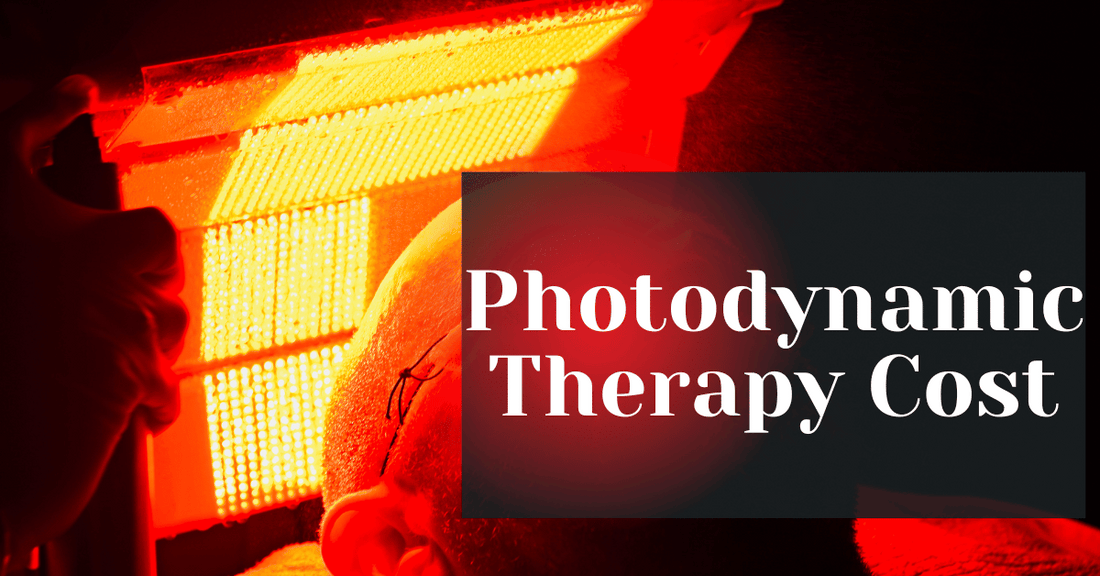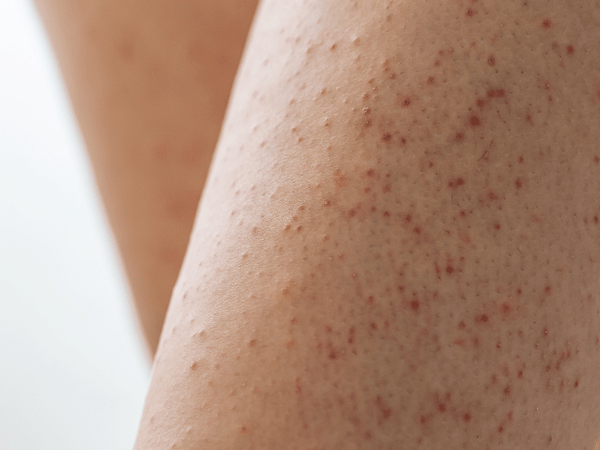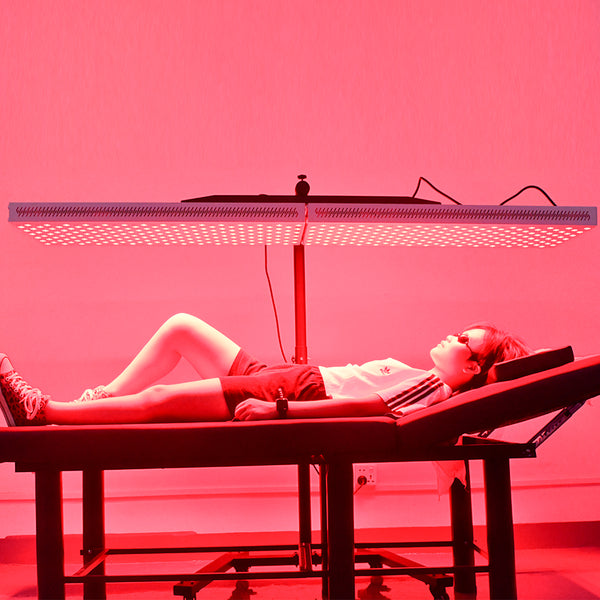
Photodynamic Therapy Cost
Photodynamic therapy (PDT) is a cutting-edge medical treatment that has gained significant attention in recent years for its effectiveness in treating a variety of conditions. At its core, PDT is a two-step process that involves the application of a photosensitizing agent, followed by exposure to a light source with a specific wavelength of light. This combination of light activates the source and activates the photosensitizer, producing a form of oxygen that can destroy targeted precancerous cells, making it a powerful tool in the fight against diseases such as to kill cancer cells, skin conditions, and even certain eye disorders.
One of the most appealing aspects of PDT is its precision and minimal invasiveness, which often results in fewer side effects compared to traditional treatments like surgery or chemotherapy. However, as with any medical procedure, understanding the costs associated with photodynamic therapy is crucial for patients considering this option. The expenses can vary widely based on factors such as the type of condition being treated, the severity of the disease, and the number of sessions required.
In this article, we will delve into the various aspects that influence the cost of PDT, providing you with a comprehensive understanding of what to expect financially. Whether you're a patient exploring treatment options or a caregiver supporting a loved one, this guide aims to equip you with the knowledge needed to make informed decisions about photodynamic therapy.
Factors Influencing Photodynamic Therapy Cost
The cost of photodynamic therapy (PDT) can vary significantly, depending on several key factors. Understanding these factors can help patients and their families better prepare for the financial aspects of the treatment. Here are some of the primary elements that influence PDT costs:
Type of Condition Being Treated

The nature of the condition being addressed with PDT plays a crucial role in determining the cost. For example, treating skin conditions like actinic keratosis may be less expensive compared to more complex procedures for internal cancers.
Severity and Size of the Area Being Treated

The severity and size of the affected area directly impact the cost of treatment. Larger or treated areas with more severe conditions require more extensive treatment, which can increase the overall cost.
Number of Treatment Sessions Required

PDT often requires multiple sessions of a single treatment to achieve the desired results. The number of sessions needed for final treatment can vary based on the condition's severity and the treatment's effectiveness, influencing the total cost.
Geographic Location and Facility Costs

The cost of PDT can differ depending on the geographic location of the treatment facility. Prices may be higher in urban areas or regions with a higher cost of living. Additionally, the type of facility (e.g., hospital, outpatient clinic) can affect the overall cost.
Type of Photosensitizer Drug Used

Different photosensitizing agents are used in PDT, each with its own cost. The choice of drug depends on the specific skin condition being treated and the treatment protocol, which can influence the overall expense.
Additional Costs

Beyond the direct costs of the PDT procedure, patients should also consider additional expenses such as consultation fees, follow-up visits, and any necessary medications or post-treatment care. These costs can add up and significantly impact the total expense of the treatment.
Average Cost of Photodynamic Therapy
The cost of photodynamic therapy (PDT) can vary widely depending on a variety of factors, including the condition being treated, the severity of the disease, and the geographic location of the treatment facility. While it's challenging to pinpoint an exact price range, understanding the average costs can help patients and their families plan financially for the treatment.
Range of Costs for Different Conditions
-
Skin Conditions: For conditions like actinic keratosis or superficial basal cell carcinoma, PDT costs can range from $400 to $1,000 per session. Typically, patients may require 1-3 sessions.
-
Acne: Treating enlarged sebaceous glands or cystic acne with PDT might cost between $300 and $600 per session, with several sessions needed for optimal results.
-
Cancer: The cost of using PDT to target abnormal cells for deeper cancers, such as esophageal or lung cancer, can be significantly higher, ranging from $2,000 to $5,000 per session, due to the complexity of the treatment and the type of photosensitizer used.
Cost Comparison Between PDT and Other Treatments for Similar Conditions
-
Skin Cancer: Traditional treatments like surgery or radiation therapy can cost several thousand dollars, depending on the extent of the cancer. In comparison, PDT might offer a less expensive alternative for early-stage or superficial cancers.
-
Acne-causing bacteria: Conventional acne treatments such as oral medications or topical creams can accumulate costs over time, especially if used long-term. PDT provides a more immediate solution, which might be cost-effective in the long run for persistent cases.
Disclaimer: Patients should consult with their healthcare provider and insurance company to get a more accurate picture of the expected expenses for their specific situation.
Insurance Coverage and Financial Assistance
Navigating the financial aspects of photodynamic therapy (PDT) can be challenging, especially when considering insurance coverage and potential financial assistance. Here's what you need to know:
Insurance Coverage for PDT
Insurance coverage for PDT varies depending on the policy and the condition being treated. Many insurance plans, including Medicare and private insurers, may cover PDT for specific indications, such as certain types of skin cancer or precancerous skin lesions. However, coverage can differ based on factors such as the severity of the skin cancer cells, the skin condition, treat cancer itself, the photosensitizing agent used, and the treatment protocol.
Financial Assistance Programs and Payment Plans
For patients who face challenges with insurance coverage or high out-of-pocket costs, financial assistance programs may be available. Some pharmaceutical companies offer patient assistance programs for their photosensitizing agents, providing the medication at a reduced cost or even for free to eligible patients.
Additionally, many treatment facilities offer payment plans, allowing patients to spread the cost of PDT over time. These plans can often be customized to fit the patient's financial situation, making the treatment more accessible.
Patients can also explore charitable organizations and foundations that provide grants or financial aid for individuals undergoing cancer treatment or other medical procedures.
Cost-Effectiveness of Photodynamic Therapy
When considering the cost of medical treatments, it's important to evaluate their cost-effectiveness, which takes into account not only the initial expenses but also the long-term benefits. Photodynamic therapy (PDT) has several aspects that contribute to its cost-effectiveness compared to other treatments:
Long-Term Benefits of PDT Compared to Other Treatments
One of the key advantages of PDT is its targeted approach, which often results in fewer side effects and complications than more invasive treatments like surgery or systemic therapies like chemotherapy. This precision can lead to quicker recovery times, less time off work, and a reduced need for additional treatments, all of which contribute to its cost-effectiveness.
Furthermore, PDT's ability to preserve skin cells' integrity and healthy tissue and maintain skin cells' functionality, particularly in treatments for skin cancer and certain types of internal cancers, can result in a better quality of life for patients. This is especially important when considering long-term outcomes and the potential for reduced healthcare costs in the future.
Impact of PDT on Overall Healthcare Costs
By reducing the need for more invasive procedures and minimizing complications, PDT can help lower overall healthcare costs. For example, in the treatment of certain skin cancers, PDT can be a cost-effective alternative to surgical excision, which may require hospitalization and more extensive post-operative care.
Additionally, the effectiveness of PDT in treating pre-cancerous skin conditions like actinic keratosis can prevent the progression to more serious and costly cancers, further contributing to its cost-effectiveness.
Alternative Treatments and Their Costs
When considering photodynamic therapy (PDT), it's important to explore alternative treatments and understand their associated costs. Here's an overview of some common alternatives to PDT and a comparison of their costs:
Surgery

Surgical excision is a common alternative to PDT, especially for certain types of skin cancer. The cost of surgery can vary widely depending on the complexity of the procedure, the type of anesthesia used, and the facility where the surgery is performed. In general, surgery can be more expensive than PDT due to the need for hospitalization, anesthesia, and potentially more extensive post-operative care.
Topical Medications

Topical treatments for skin, such as creams and ointments, are often used for conditions that treat the skin, like actinic keratosis, acne scars, and superficial skin cancers. While the cost of these medications can be lower per application compared to PDT, they may require prolonged use and frequent reapplication, which can add up over time.
Other Treatments

Other alternatives used to treat PDT may include cryotherapy (freezing the affected skin's surface area), laser therapy, or radiation therapy. The costs of these treatments can vary, with laser therapy and radiation therapy often being more expensive due to the specialized equipment and expertise required.
Cost Comparison

When comparing the costs of alternative treatments to PDT, it's important to consider not only the direct costs of the treatment itself but also the potential long-term costs. For example, while surgery may have a higher upfront cost, it may offer a more definitive first treatment option with fewer follow-up procedures needed. On the other hand, PDT may offer a less invasive treatment option with a lower risk of complications, which can be more cost-effective in the long run.
Ultimately, the choice of treatment should be based on a thorough discussion between the patient and their healthcare provider, taking into account the specific condition being treated, the patient's overall health, and the potential costs and benefits of each treatment option.
Koze Health Red Light Therapy as an Alternative
While photodynamic therapy (PDT) has proven to be an effective treatment for various conditions, it's important to explore alternative options other than light therapies that may offer different benefits or be more suitable for certain patients. One such alternative is red light therapy, particularly the various light products offered by Koze Health.
Explanation of Red Light Therapy and How It Differs from PDT
Red light therapy, also known as low-level laser therapy or photobiomodulation, is an outpatient procedure that uses low-level wavelengths of red and near-infrared light to treat various conditions. Unlike PDT, which requires a photosensitizing agent and targets specific areas for treatment, red light therapy is non-invasive and can be used for overall wellness and healing. It works by stimulating cellular energy production and reducing inflammation, which can lead to various health benefits.
Potential Benefits and Uses of Red Light Therapy
Koze Health's Red Light Therapy devices are designed to provide a range of benefits to most patients, including:
-
Improved skin health: reducing signs of aging, such as wrinkles and fine lines, and treating conditions like acne and eczema.
-
Enhanced muscle recovery: speeding up the healing process after injuries or intense physical activities.
-
Pain relief: alleviating chronic pain conditions, such as arthritis and joint pain.
-
Improved mood and sleep: regulating circadian rhythms and promoting relaxation.
Cost Comparison Between Red Light Therapy and PDT
The cost of Red Light Therapy can vary depending on the device and the extent of light treatment required. Koze Health offers a range of Red Light Therapy devices at different price points, making it an accessible option for many individuals. In comparison to PDT, which can be more expensive due to the need for specialized medical equipment and photosensitizing drugs, Red Light Therapy can be a more cost-effective alternative for those seeking general wellness benefits or treatment for specific skin conditions only.
In conclusion, while PDT remains a valuable treatment for certain medical conditions, Koze Health's Red Light Therapy offers a versatile and non-invasive alternative that can provide a range of health benefits. When considering treatment options, it's important to weigh the costs and benefits of each and consult with a healthcare professional to determine the best approach for your specific needs.
Conclusion
Understanding the costs associated with photodynamic therapy (PDT) is an essential part of preparing for treatment. Throughout this article, we've explored the various factors that influence PDT costs, from the type of condition being treated to the geographic location of the healthcare facility. We've also discussed the importance of insurance coverage and available financial assistance programs, as well as the long-term cost-effectiveness of PDT compared to other treatments.
As we've seen, while PDT may have an upfront cost, its targeted approach and potential to reduce long-term healthcare expenses can make it a valuable option for many patients. However, it's crucial to consider alternative treatments, including less traditional options like Koze Health Red Light Therapy, to fully understand the spectrum of available treatments and their associated costs.
We encourage patients and their families to actively engage in discussions with healthcare providers about the costs and benefits of PDT and alternative treatments. Asking questions and seeking detailed information about treatment options, costs, and potential outcomes is vital in making informed decisions that align with your health needs and financial situation.
Remember, the goal of any treatment is not just to manage or cure a condition but also to maintain the quality of life and minimize financial stress. By taking an active role in understanding and evaluating the costs involved in acne treatment, patients can navigate their treatment journey with greater confidence and peace of mind.
FAQs
How much does photodynamic therapy typically cost?
The cost of photodynamic therapy can vary widely depending on factors such as the condition being treated, the severity and size of the treated area, the number of sessions required, and the geographic location of the treatment facility. On average, the cost can range from a few hundred to several thousand dollars per session.
Is photodynamic therapy covered by insurance?
Coverage for photodynamic therapy varies depending on the insurance provider and the specific policy. In many cases, PDT is used to treat certain medical conditions, such as large cancers such as skin cancer or actinic keratosis. However, it's important to check with your insurance provider for specific coverage details.
Are there any financial assistance programs available for photodynamic therapy?
Yes, there are financial assistance programs and payment plans available for patients undergoing photodynamic therapy. These programs can help reduce the financial burden and make the treatment more accessible. It's advisable to speak with the healthcare provider or financial counselor at the treatment facility for more information.
Is photodynamic therapy more expensive than other treatments for the same condition?
The cost of photodynamic therapy compared to other treatments depends on the condition being treated and the adverse effects of the specific treatment options. In some cases, PDT may be more cost-effective in the long term due to its targeted approach to acne treatment and fewer side effects, which can reduce the need for additional treatments and healthcare expenses.
Can red light therapy be used as an alternative to photodynamic therapy, and is it cheaper?
Red and blue light therapy is a different treatment modality that uses low-level red and blue light, to promote healing and reduce inflammation. It can be an alternative for certain conditions, such as skin rejuvenation or pain management, but it is not a direct substitute for photodynamic therapy in treating specific conditions like cancer. The cost of red and blue light therapy can vary, but it is generally less expensive than PDT, making it a more affordable alternative for some patients.
References
1. Agostinis, P., Berg, K., Cengel, K. A., Foster, T. H., Girotti, A. W., Gollnick, S. O., ... & Golab, J. (2011). Photodynamic therapy of some cancer cells: an update. CA: A Cancer Journal for Clinicians, 61(4), 250-281. https://doi.org/10.3322/caac.20114
2. National Cancer Institute. (2020). Photodynamic Therapy for Cancer. https://www.cancer.gov/about-cancer/treatment/types/photodynamic-therapy
3. American Academy of Dermatology. (n.d.). Actinic Keratosis: Diagnosis and Treatment. https://www.aad.org/public/diseases/skin-cancer/types/common/ak/diagnosis-treatment
4. Morton, C. A., McKenna, K. E., & Rhodes, L. E. (2008). Guidelines for topical photodynamic therapy: update. British Journal of Dermatology, 159(6), 1245-1266. https://doi.org/10.1111/j.1365-2133.2008.08814.x
5. Wiegell, S. R., Fabricius, S., Gniadecka, M., Stender, I. M., Berne, B., Kroon, S., ... & Haedersdal, M. (2008). A randomized, multicentre study of directed daylight exposure times of 1½ vs. 2½ h in daylight-mediated photodynamic therapy with methyl aminolevulinate in patients with actinic keratoses. British Journal of Dermatology, 158(4), 740-746. https://doi.org/10.1111/j.1365-2133.2008.08417.x
6. Wiegell, S. R., Haedersdal, M., Eriksen, P., Wulf, H. C. (2006). Photodynamic therapy of actinic keratoses with 8% and 16% methyl aminolaevulinate and home-based daylight exposure: a double-blinded randomized clinical trial. British Journal of Dermatology, 154(6), 1036-1040. https://doi.org/10.1111/j.1365-2133.2006.07195.x]
7. American Society for Dermatologic Surgery. (n.d.). Photodynamic Therapy (PDT). https://www.asds.net/skin-experts/skin-treatments/photodynamic-therapy
8. National Health Service. (2019). Photodynamic therapy (PDT). https://www.nhs.uk/conditions/photodynamic-therapy-pdt/



